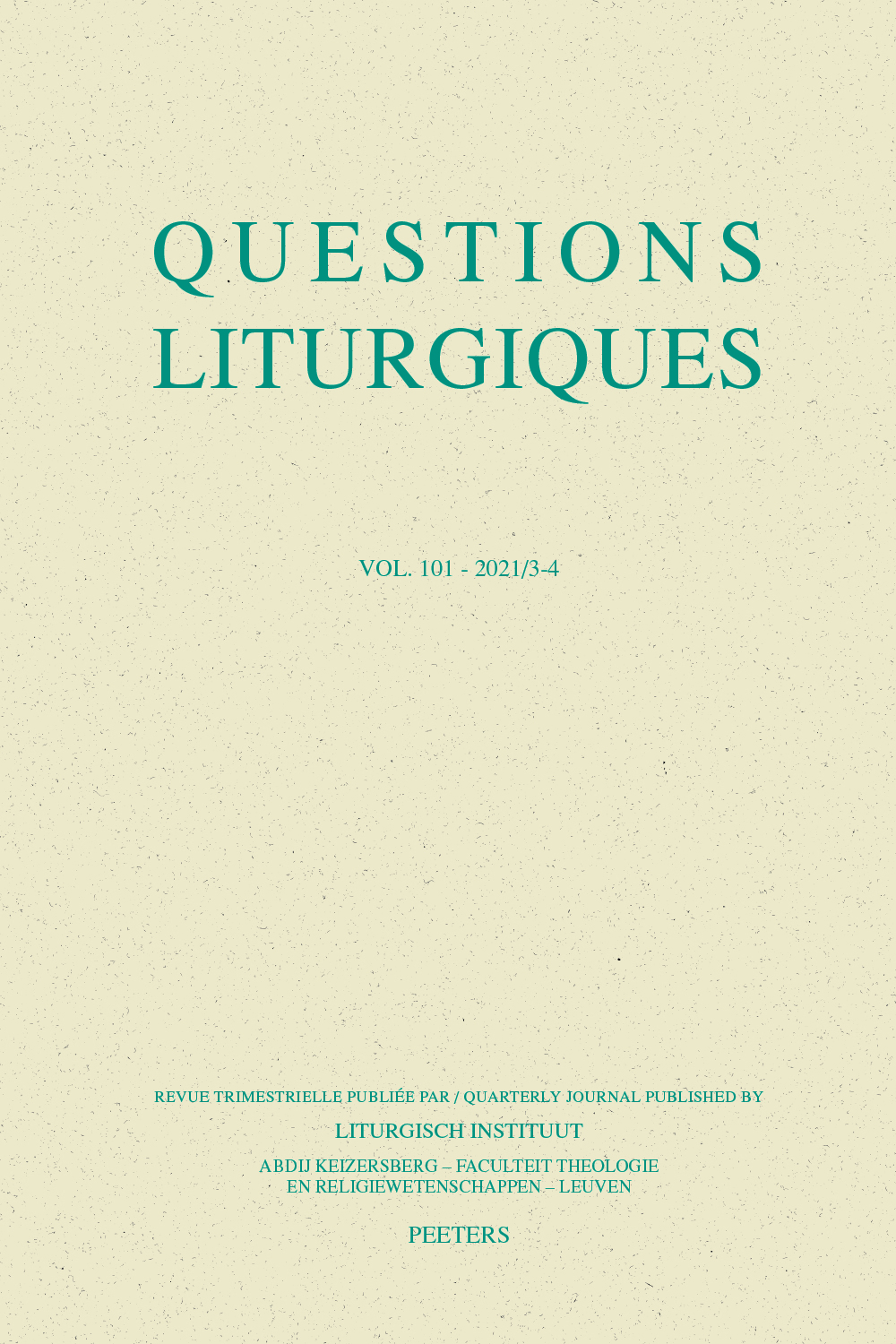 previous article in this issue previous article in this issue | next article in this issue  |

|
Document Details : Title: What Problems did the Liturgical Reform Intend to Remedy? Author(s): TE VELDE, Johan Journal: Questions Liturgiques/Studies in Liturgy Volume: 98 Issue: 1-2 Date: 2017 Pages: 81-101 DOI: 10.2143/QL.98.1.3275143 Abstract : In the first part of this paper we consider the notion of 'stagnation factor' that we use for the shortcomings in the liturgical communication process. The second section contains the concise results of a close reading of the text of the Constitution on the liturgy by which we determine six stagnation factors that the composers had in mind. It appears that the text focuses on the intelligibility of texts and symbols, on a conscious participation in the communal celebration, and on a recognition from people’s own cultural background. In the third part these factors are further examined in the light of changed insights, especially concerning the role of the human body, emotion, and experience in the liturgy. Apparently the same factors can have not only a stagnating but also, in a different perspective, a promoting function in the liturgical process. They are interpreted differently now, than they were in the first decades after the Council. Then there was a tendency to make the liturgical communication clear and unambiguous, based on an optimism about human cognitive and rational skills. Currently there seems to be more attention for the emotional, individual, diverse and physical aspects of liturgical communication. This raises the question whether the reform of the Roman Catholic liturgy is based on outdated principles. Dans la première partie de cet article nous réfléchissons sur la notion de «facteur de stagnation», que nous utilisons pour désigner les défauts dans le processus de la communication liturgique. La seconde partie présente les résultats précis d’une lecture attentive du texte de la Constitution sur la sainte liturgie, à la base de laquelle nous détectons six facteurs de stagnation que les pères conciliaires peuvent avoir imaginés. Il devient clair que la constitution se focalise sur l’intelligibilité de textes et de symboles, sur la participation active à la célébration en commune, et sur une reconnaissance du contexte culturel des gens. Dans la troisième partie ces facteurs sont examinés plus profondément à la lumière de convictions changées, surtout concernant le rôle du corps humain, des émotions et de l’expérience en liturgie. Apparemment les facteurs peuvent avoir en deçà d’une fonction de stagnation – mais vu d’un autre angle – une fonction prometteuse dans le processus liturgique. Elles sont maintenant alors interprétées différemment que lors des premières décennies après le Concile. À cette époque il y avait une tendance à rendre la communication liturgique claire et sans ambiguïtés, étant donné un optimisme sur les compétences humaines cognitives et rationnelles. Cette observation surgit la question si la réforme de la liturgie catholique romaine est fondée sur des principes périmés. |
|
